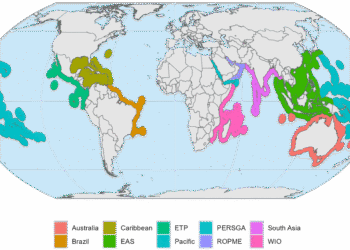At [Our Website], we understand that studying in the USA is a dream for many international students. However, navigating the costs associated with education can be daunting. In this detailed guide, we delve into effective strategies to minimize expenses and find budget-friendly options without compromising on the quality of education.
Understanding Costs for International Students
Tuition Fees: Public vs. Private Institutions
Choosing between public and private universities significantly impacts your expenses. Public universities generally offer lower tuition rates for in-state students, while private institutions tend to have higher overall fees. It’s crucial to consider these factors when planning your educational budget.
Living Expenses: Budgeting Wisely
Beyond tuition, living expenses include housing, utilities, groceries, and transportation. Opting for on-campus housing or shared accommodations can often be more economical than renting alone. Understanding these costs upfront allows for effective financial planning.
Additional Expenses: Health Insurance and Fees
Health insurance is mandatory for most international students and varies in cost depending on the coverage provided by the institution. Budgeting for books, supplies, and other fees is also essential to avoid unexpected financial strain.
Maximizing Financial Aid Opportunities
Types of Scholarships Available
Merit-based and need-based scholarships are key resources for offsetting tuition costs. Many universities and organizations offer scholarships specifically tailored for international students, rewarding academic achievement and financial need.
Grants, Fellowships, and Institutional Support
Government grants and institutional fellowships provide additional financial aid options that do not require repayment. Early research and application for these opportunities are critical in reducing financial burdens.
Financial Aid Programs: Loans and Work-Study
While loans provide immediate financial support, they come with repayment obligations. On the other hand, work-study programs enable students to earn income while gaining valuable experience, contributing to their overall financial stability.
Cost of Living Variations Across Different States
States with Lower Cost of Living
Certain states offer a lower cost of living, making them more budget-friendly for students. Factors such as housing affordability and local economic conditions play a significant role in these variations.
States with Higher Cost of Living
Conversely, states with major cities or higher living standards often have higher costs. It’s essential to weigh these factors carefully when selecting a study location to align with your financial capabilities.
Practical Tips to Minimize Costs
Budgeting Strategies
Creating a detailed budget helps manage finances effectively. Identifying areas where expenses can be reduced without compromising quality of life is crucial for long-term financial stability.
Part-time Jobs and Internships
Many international students supplement their income through part-time jobs or internships. Understanding legal restrictions and exploring opportunities available on-campus or within the local community can significantly contribute to financial security.
Utilizing Community Resources
Taking advantage of university and local community resources such as food banks, student discounts, and free campus events can stretch your budget further, ensuring a more sustainable financial approach.
Strategic Planning for Financial Success
Early Preparation and Research
Initiating scholarship applications well in advance of your intended start date maximizes your chances of receiving financial aid. Proactive planning allows you to explore all available options comprehensively.
Developing a Financial Plan
Creating a robust financial plan that includes provisions for unforeseen expenses and currency fluctuations minimizes financial stress during your academic journey, promoting a focused approach to achieving academic goals.
Conclusion: Achieving Affordable Education in the USA
Studying in the USA is attainable with careful financial planning and strategic decision-making. By understanding the diverse costs involved, exploring robust financial aid opportunities, and implementing effective budgeting strategies, international students can pursue their academic aspirations affordably and successfully.
FAQ Section
- Typical Tuition Fees:
- Tuition fees vary widely by institution and state. On average, international students can expect to pay between $20,000 to $40,000 per year at public universities and higher at private institutions.
- Scholarships for Undergraduate International Students:
- Yes, many universities offer scholarships based on academic merit, financial need, or both. Check with individual institutions for specific eligibility criteria and deadlines.
- Budget for Living Expenses:
- Budget between $10,000 to $20,000 annually for housing, food, transportation, and personal expenses, depending on location and lifestyle.
- Part-time Work Opportunities:
- International students on an F-1 visa can generally work part-time on-campus during academic terms and full-time during breaks, with limited off-campus opportunities.
- Saving Money on Textbooks:
- Consider buying used or renting textbooks, exploring digital options, and leveraging student discounts to reduce costs.












